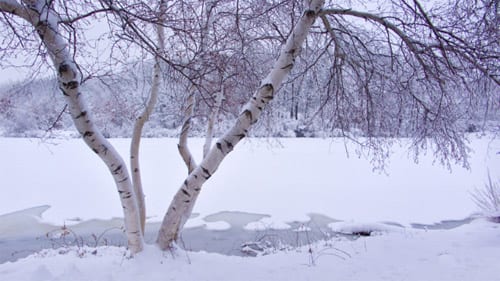Shooting Snow

The first few hours after a snow has fallen are magical times. The snow is pure. The only tracks in the snow are from moving twigs scraping the surface of the snow or the fragile tracks of birds and other small animals. They belong there.
You’re honored to be seeing something that is so beautiful, clean, pure and private.
Photographing a scene can be a spiritual event, but there are a few aesthetic and technical issues to bear in mind to help make the overall experience a positive one.

© Frank Siteman
The first should be attention to the light and in determining the proper composition and exposure, but the really important thing is to keep both yourself and your equipment warm and dry.
ALWAYS keep a spare battery (in a sealed baggy to keep it dry), in a warm inside pocket, and if possible, keep your camera itself under your coat. Cold weather can drain a battery in an amazingly short period of time. The use of chemical hand-warmers, usually found at sporting good stores or on the impulse-buying racks at the checkout counters of Home Depot, are an essential of cold weather shooting. These little packets typically contain cellulose, iron, water, activated carbon, vermiculite and salt and produce heat from the exothermic oxidation of iron when exposed to air. They create a safe, long-lasting and significant amount of very useful heat.

© Frank Siteman
I typically have one between my hand and the camera’s battery compartment while out shooting in cold environments, as well as one in each of my mittens.
Of course, you’ll want to check your histograms carefully after every shot, remembering to keep the histogram accurate to the scene it represents.
Additionally, shooting in RAW should be a major part of your workflow. With the controls of Camera Raw (or Lightroom),you really put yourself in the driver’s seat, From there, you can choose to balance the snow to neutral or give it a hue of your chosing, all the while preserving continuous tones in 16 bit, assuring that your final files will create stellar prints free of banding.

© Frank Siteman



